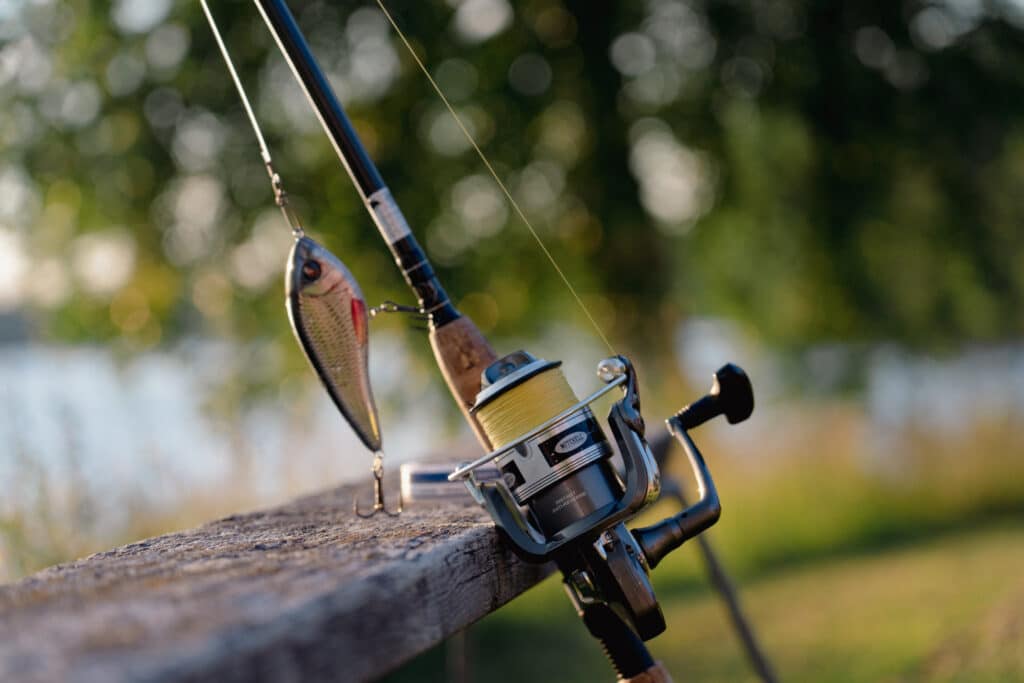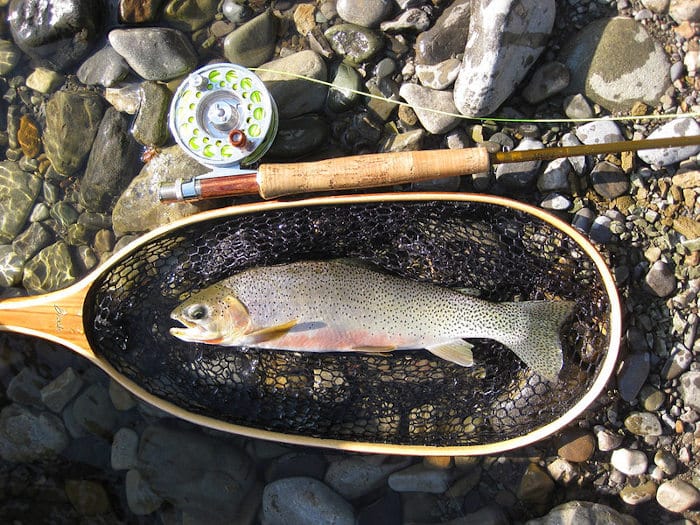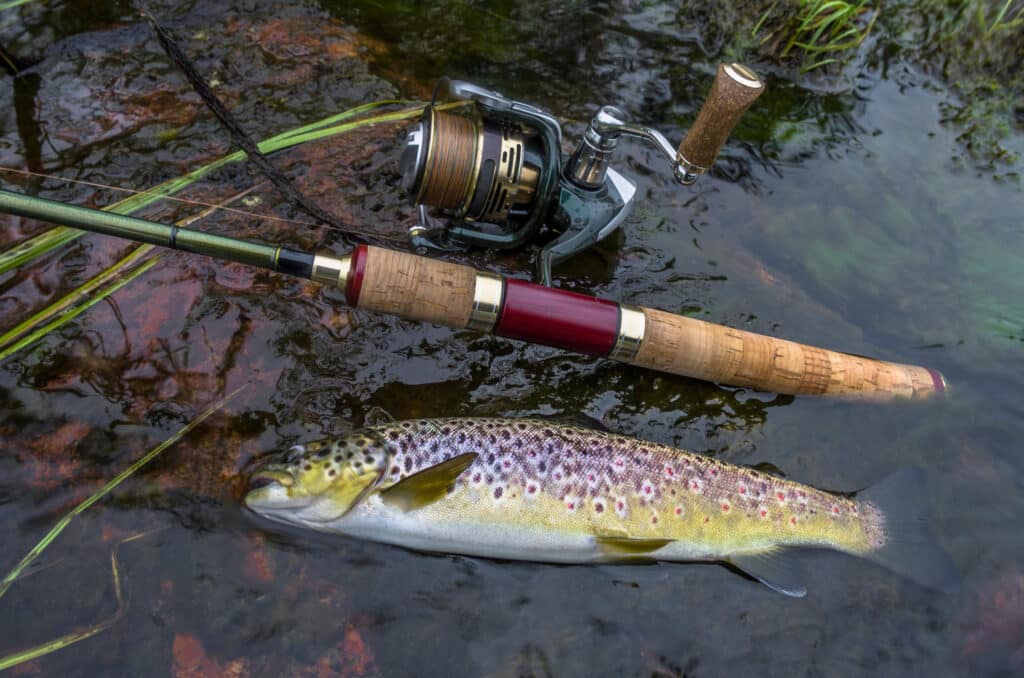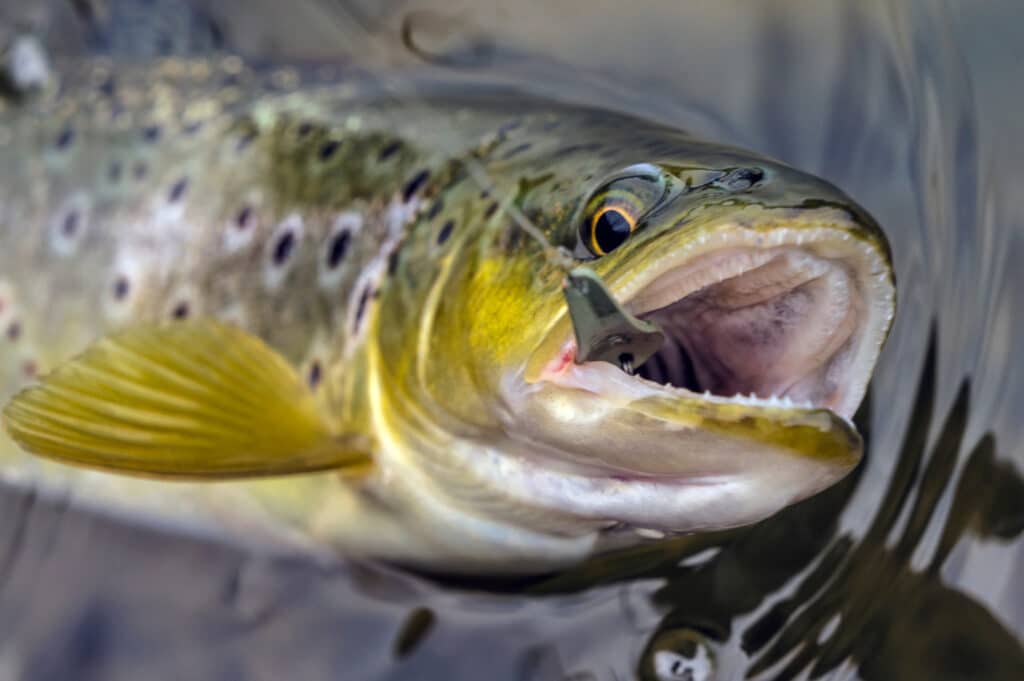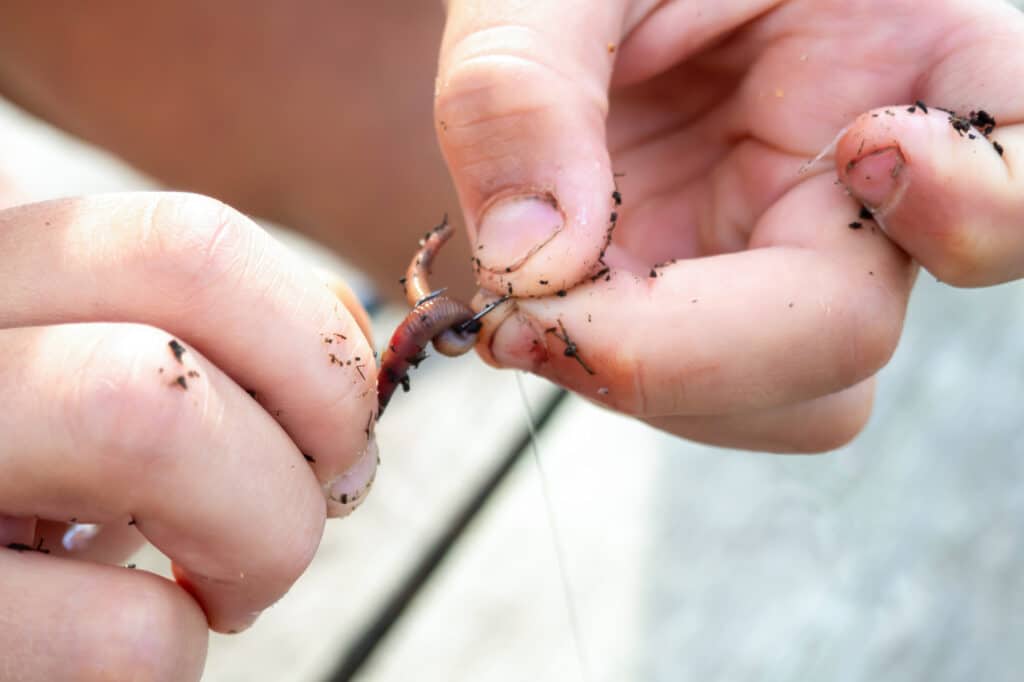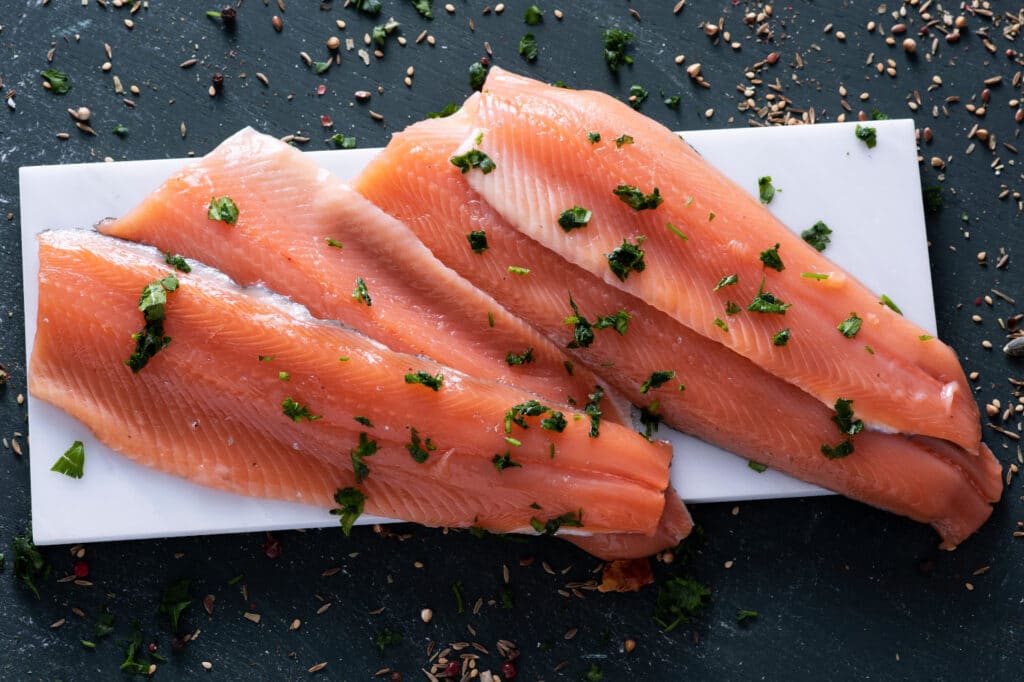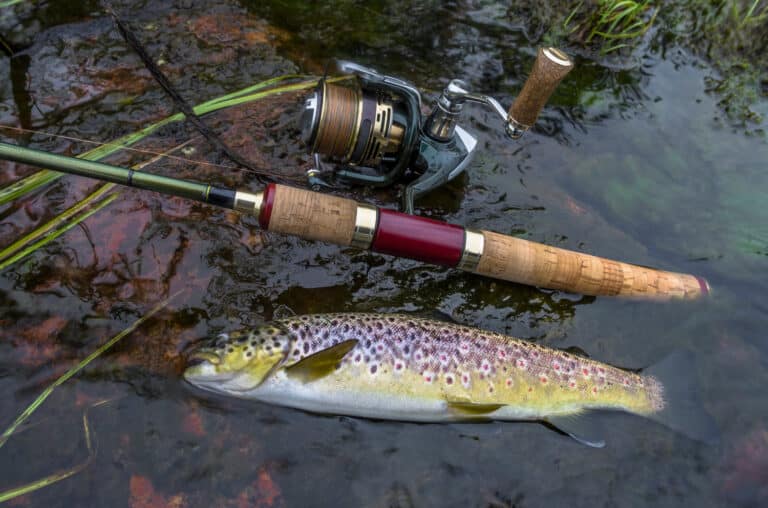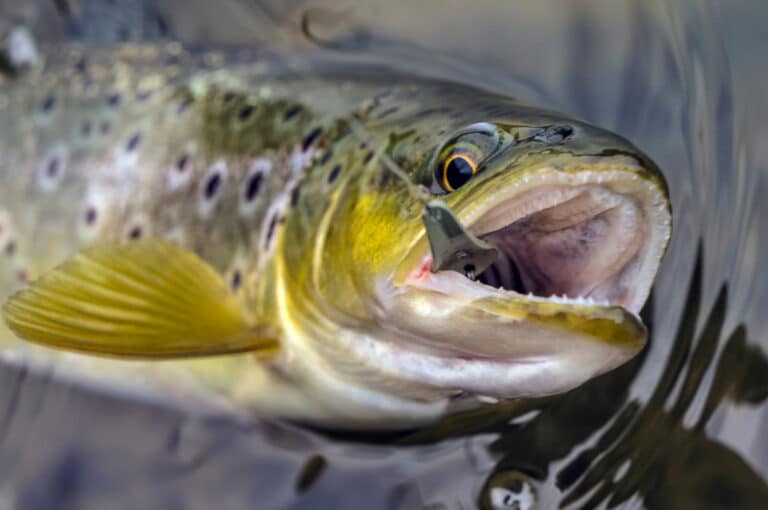Of all the fishing decisions you have to make, choosing a fishing rod is one of the most difficult. If you’re on a budget and you want to make the best choice for your money, it seems like there are a million things to consider. And especially when it comes to bass, a question I hear all the time is “Should I get a medium rod or a medium heavy?”
In this article, I’m going to go explain what medium and medium heavy refer to, what they mean in practice, and the things you should consider when choosing one.
But if you need a quick answer, here it is: Medium and medium heavy both reference a spinning rod’s power. Medium fishing rods are best for casting baits or weights of 1/2 ounce or less, while medium heavy rods are best for more than 1/2 ounce. If you’re a beginner and need one rod for most situations, go with a medium-power rod.
This a very stripped-down answer, though, and in reality the species you’re targeting, the types of lures you use, and your particular style and type of fishing all come into play. Read on for a more detailed look.
Understanding Rod Power Ratings
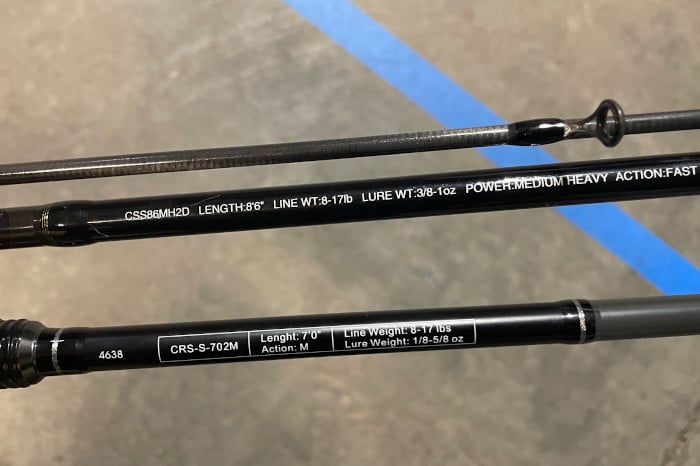
Though the terms “medium” and “medium heavy” sound pretty intuitive, it’s important to know what they mean from a rod manufacturer’s perspective so you know exactly what you’re dealing with.
Both terms refer to a quality of a spinning rod called “power“. Power, which is often described as “backbone,” is how much pressure or weight it takes to bend the rod. A heavy rod will therefore require much more weight to bend than an ultralight rod. This is different from a rod’s action, which refers to where the rod starts to bend as you add weight to it.
Power ratings go from ultralight all the way up to extra heavy and beyond, but each rod is unique and two different rods of the same power don’t always perform the same way. This is why most manufacturers also state power in terms of line test and lure weight, usually right on the rod itself (pictured above).
Here’s an example: Okuma (one of my favorite brands) defines its medium-power Cerros rod as “8-17, 1/8oz-5/8oz,” but Ugly Stik defines its medium-power Elite rod as “6-14, 1/4oz to 5/8oz.” The Ugly Stik in this example doesn’t cast as well at the lighter end of the spectrum, but they perform similarly with 1/2 ounce of weight. The difference here is pretty subtle, but fishing rods in the same category can be all over the map in terms of weight rating.
Every power rating under the sun has its own place in different situations. But for freshwater bass and walleye fisherman, medium and medium-heavy rods are by far the most popular.
What Is Rod Action?
This is an article about power ratings, so I’ll keep the action section brief. But two medium rods with different actions perform differently, too, so it’s important to have a general idea of how they work.
Action refers to where a fishing rod starts to bend as you add weight to it. If rod power is called “backbone,” then rod action is “sensitivity.”
Actions are classified as fast action, moderate action, or slow action. The faster the action, the more sensitive the rod tip. But a fast action tip can also help you flick light lures, detect light bites, or keep the movement of a deadstick presentation to a minimum. It goes hand-in-hand with power, and it’s important to keep action in mind when choosing a fishing rod, too.
Medium Vs. Medium Heavy: Choosing By Lure Weight
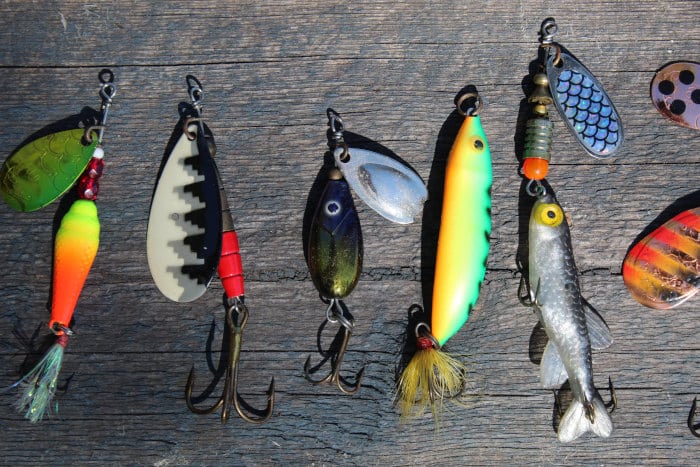
Since power depends on how much weight it takes to bend a rod, it makes sense to choose your power based on the weight of lures you plan on using.
Most medium rods are rated for weights up to 5/8 ounces, while most medium heavy rods are rated for weights up to around one ounce. As I said above, this can vary by quite a bit, but generally medium rods perform best for lures 1/2 oz or less, while medium heavy are best for more than 1/2 oz.
As anglers, we don’t just use one weight all the time, though. We need to be able to change weights and lures for conditions, and most people don’t have the money to buy a rod for every situation. So if you’re stuck between the two, I always recommend going with a medium rating first.
Here’s why: In typical bass, walleye, and even pike fishing, you’ll rarely need the extra wiggle room at the upper end of the spectrum, and your average lure will weigh 1/2 oz or less. If you do need that extra weight, a medium rod can usually punch outside its weight class as long as you’re careful with your casts.
But medium rods drastically outperform medium heavys if you use weights around 1/4 oz or less, and I find myself using rigs like this all the time. Weightless wacky worms, light frogs, and neko rigs are all best fished with a medium rod, but that same rod will handle big swimbaits well too.
The Mechanics Of Casting
When I say “outperform,” I’m talking about casting distance and accuracy.
Casting a lure isn’t like throwing a baseball, where the force you apply with your arm is what propels the ball forward. It’s more like a slingshot, because you use the flex in the rod to store energy as you swing it. When you let go, that energy is released all at once, allowing you to cast much further than you could ever throw.
How far you can cast has everything to do with that flex, so if your lure is too light to bend the rod, you might as well just throw it. If your lure is too heavy, on the other hand, the rod stops being an effective spring, because it doesn’t have enough backbone to propel the lure forward at the end of the cast.
That brings us back to the medium vs medium-heavy debate. I find that even when using rigs that weigh up to an ounce, a medium-power rod has enough backbone to lob cast relatively effectively. But they still load up and cast well with baits as light as 1/16 oz, too, and the extra flex in the mid-range (3/8 oz-1/2oz) provides more control and accuracy than a medium heavy throwing the same weight.
Lure weight is the most important factor when deciding between a medium or medium-heavy rod, but there are a couple of other things to consider, too.
How Rod Power Affects Hooksets
Rod power and good hooksets go hand in hand. The more weight required to bend the rod, the more force is transferred to the end of the line and the point of the hook.
When hooksets are of the utmost importance, a medium-heavy rod performs better than a medium rod. This can be important for single hook rigs, especially when they’re weedless or soft plastics are hiding the hook. These types of rigs usually leave a little slack in the line and the hook will face more resistance before it can actually hook the fish.
But when fishing crankbaits, spinners, or anything with treble hooks, the opposite is true. If you set the hook hard it can rip straight through the fish’s mouth, injuring it and losing the fish in the process. The best way to set the hook here is to just reel down and apply steady force, because the movement of the lure will have already hooked the fish for you. A medium rod is best; it makes applying steady force easy, because it will already be partially loaded up while you’re cranking.
Then there’s the issue of species. Walleye have mouths that are easily damaged by hard hooksets, and usually just require a snap of the wrist or steady force to set the hook right. Northern pike, on the other hand, have very hard mouths, and hard, forceful hooksets are critical to consistently land them. Bass are more forgiving; you can pierce the mouth relatively easily, but their mouths are strong enough to take a heavy hookset, too.
With all that said, I still think a medium power rod is best for most situations. You can always reel down and swing set hard for extra force, but a medium heavy requires too much precision for fish like walleye, and it’s way beyond overkill for something like a crappie.
Rod Power And Fish Size
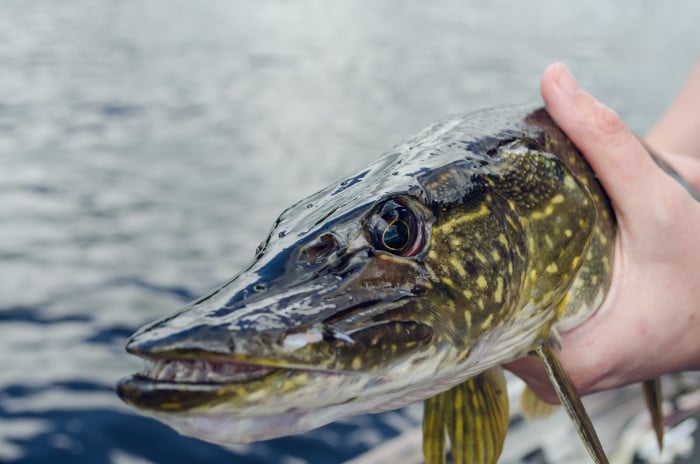
How a rod will cast a lure is the most important factor when choosing its power, but the size of the fish also comes into play. When it comes to fighting a fish like a bass, medium-power rods are usually a safer bet than medium-heavy rods.
The key to fighting a fish is making sure that the hook stays firmly in place, and that requires constant tension on the line. If the line goes slack for even a second, a fish can easily roll right out of a good hookset.
A rod that bends more easily is better at keeping tension on the line, because it acts like a spring that stores energy. If your rod is bent and the fish lets up or changes directions quickly, the rod will unload a little but the line tension will stay the same. If you have a medium-heavy rod that doesn’t bend easily, a quick change of direction could be enough to let the rod straighten completely. When that happens, your line goes slack and you lose the fish.
That doesn’t mean that medium power rods are always better, but I think for most people in most freshwater situations, it provides a better balance. If you’re planning on targeting giant pike, walleye, or even muskies, though, then a medium-heavy rod might be a better fit for you.
How Rod Power Affects Presentation
One more thing to consider is the presentation of your lures. Though it’s a relatively minor piece of the puzzle, a rod’s power rating affects what your lures do in the water.
When you jig with a medium-heavy rod, more force is transferred to your line immediately. This means your lure will make quick, fast movements, as opposed to a medium rod that will allow your lure to move more slowly.
Different fishing techniques can work better with one or the other. Top water frogs, for example, need to be “popped” to create that signature walking action. A medium-heavy rod is best here, because it’ll transfer the force all at once and pop your frog across the water. Fast-action rods can soften this a little, though.
Drop shot fishing, however, requires little to no jigging, and quick movements can actually spook fish. A medium rod works better here, because it doesn’t create such jerky movements at the end of your line.
When you fish a soft plastic on a jighead, either one can work well depending on your goal.
This is really more of an issue for anglers with an arsenal of spinning rods who change rods with every lure. But it’s still something to consider and pay attention to on the water. And again, a medium rod is a little more versatile than a medium-heavy.
Conclusion
In the age-old battle of medium vs medium heavy fishing rods, it’s hard to declare a winner. Both have their advantages and disadvantages, and the best rod to use is ultimately the one that works best for you. But if you’re new to bass angling and can only pick one spinning rod, I typically recommend a medium power rod with a fast-action tip.
And if you need a rod for lighter fish like trout or panfish? Check out my post on light vs ultralight rods for tips on how to choose one.

